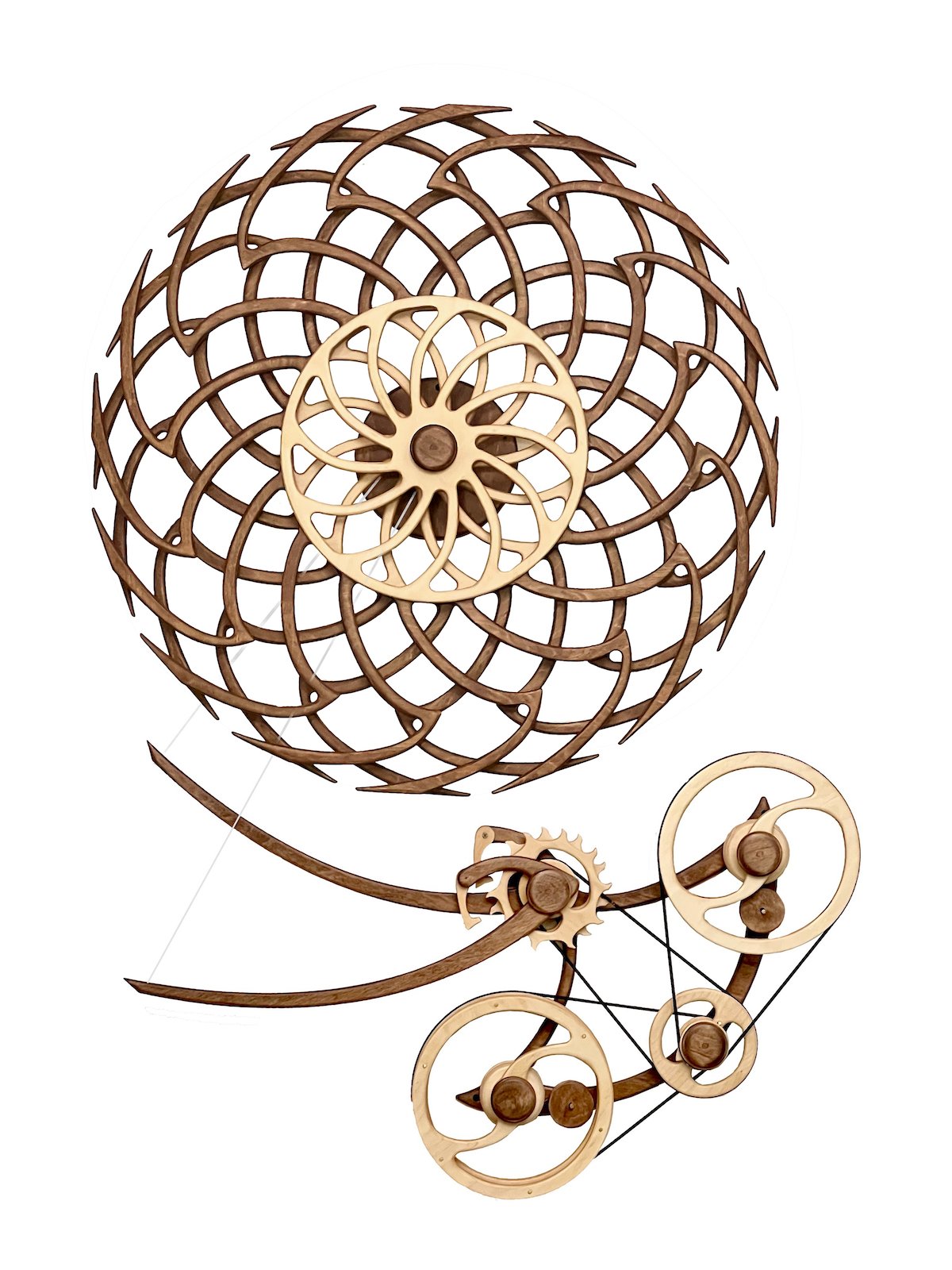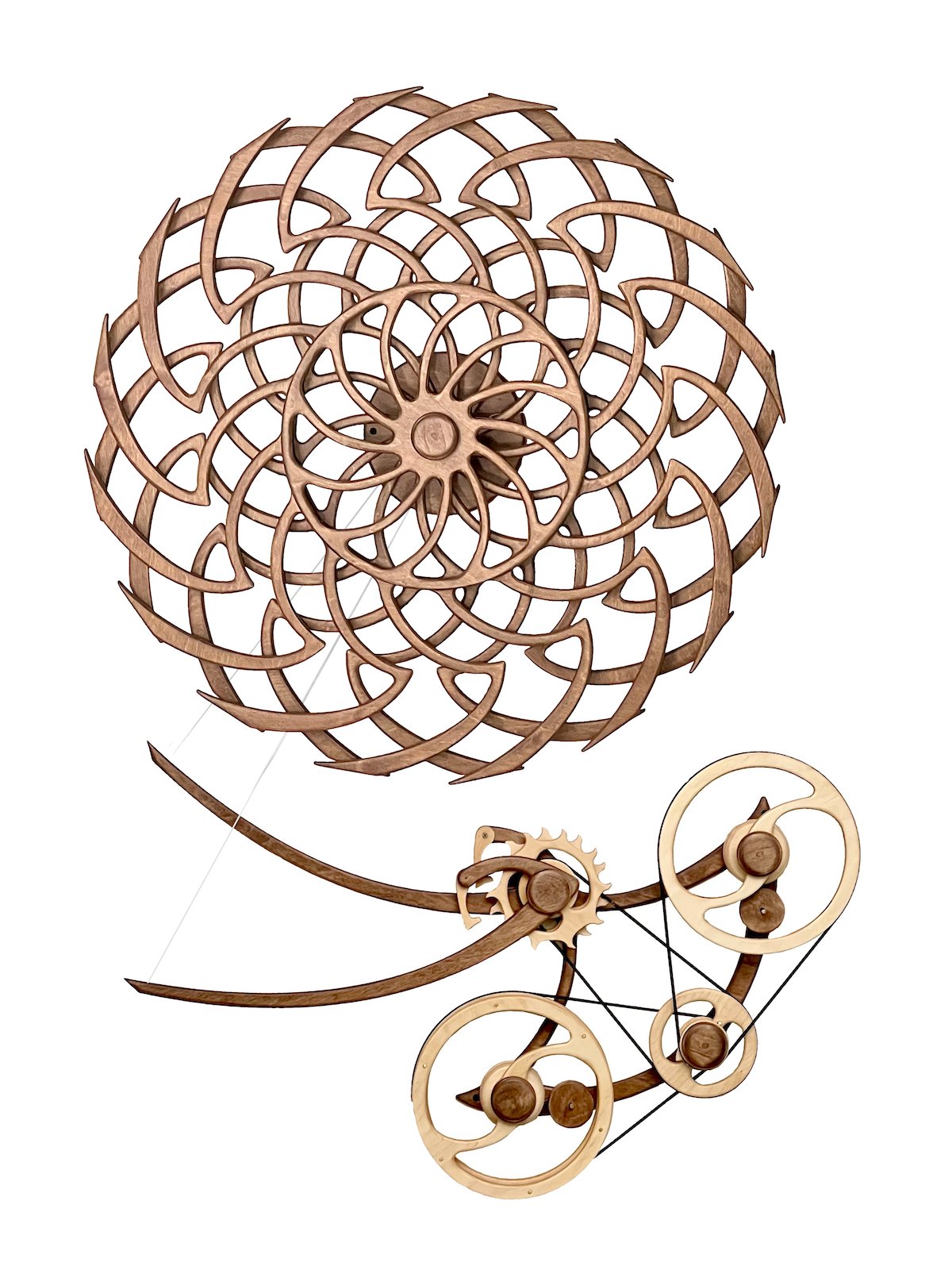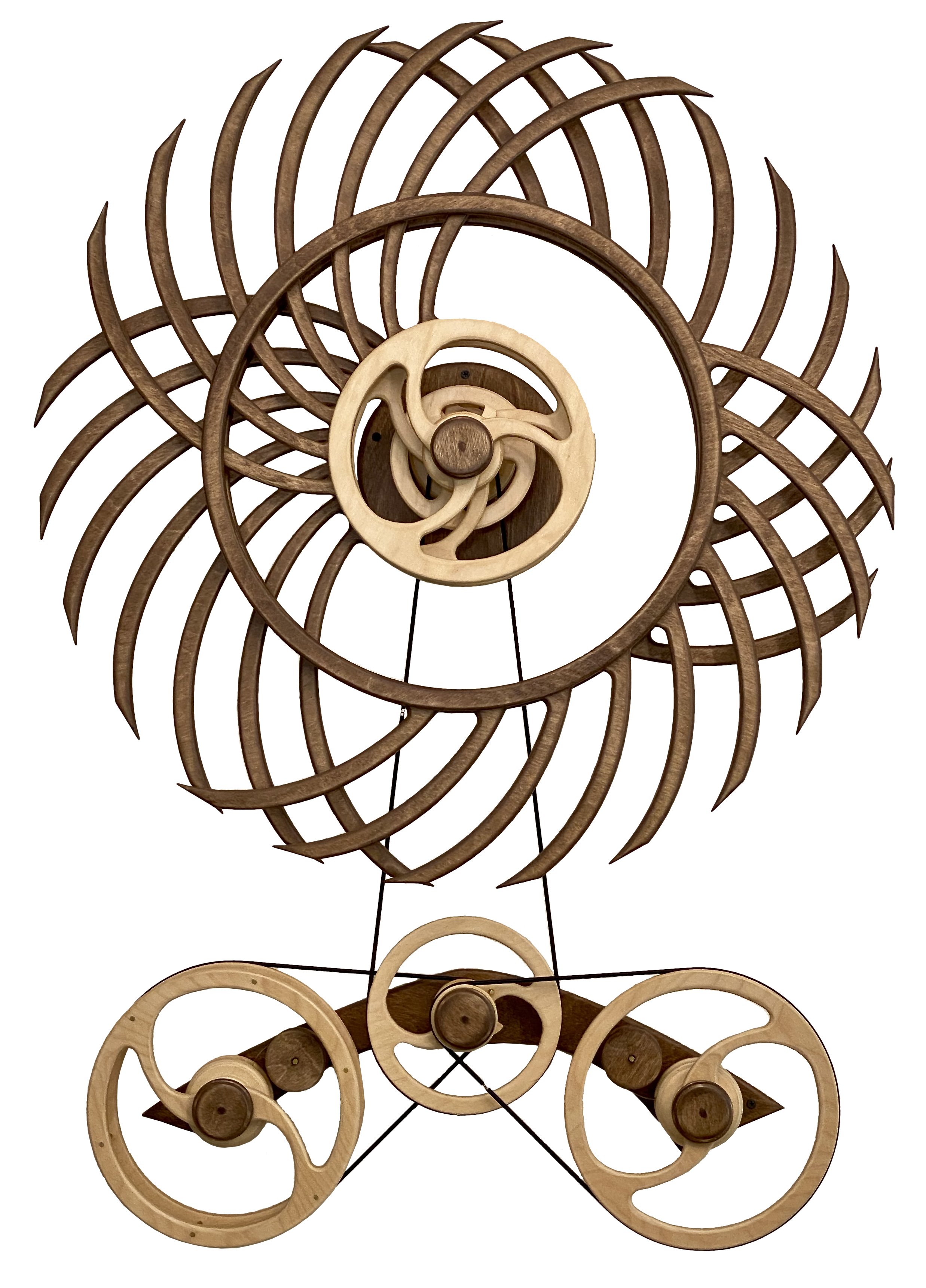Mingle Study Mix 1 by David C. Roy of Wood That Works ©2023
Specifications:
Size: 34” w x 47”h x 6”d
Approximate Run Time: 18 Hours
Sold
One-of-a-kind
Mingle Study Mix 1 ©2023
Introducing the Mingle study series
One of the best aspects of being semi-retired is having ample time to experiment with new ideas. Instead of merely creating animations or rough prototypes, I can now build finished sculptures, eliminating the uncertainty of how they would function once completed. I took full advantage of this in my Mingle studies.
I initially utilized patterning wheels approximately the same size as those on my Boomerang sculpture. I employed the same base and mechanism because I was familiar with their mechanical capabilities. The patterns were indeed impressive, surpassing my expectations based on the animations. However, these sculptures were large, while I had many requests for designs that could fit on smaller walls. Now that I had the time I accepted the challenge. The patterns were essentially the same for both the large and smaller designs, but the mechanisms differed as I aimed to make the smaller one more compact but still have an extended runtime.
We have thoroughly enjoyed these sculptures in our home and gallery. Now, it is time to showcase and sell them to create space for the next set of studies.
Here are links to each of the five sculptures in this series.








